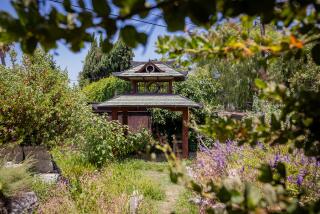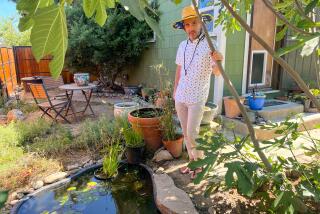Tillman’s Plant Gives Water the Treatment
- Share via
The name of the facility--the Donald C. Tillman Water Reclamation Plant and Japanese Garden--doesn’t quite tell it all.
Its completion in 1984 was “a dream come true,” said former L.A. City Engineer Donald Tillman, but it took nearly a quarter of a century to “fight it through all the way.”
Anticipating the need to preserve the capacity of downstream facilities in the rapidly growing city, Tillman originally formulated the concept of an upstream water reclamation plant around 1960.
Coincidentally, he was also taking a UCLA class on Japanese gardens taught by Koichi Kawana, who would eventually design the reclamation plant garden.
A Los Angeles native and Caltech graduate, Tillman, who lived in Sherman Oaks at the time, liked what he calls the “engineering thinking” involved in the features of a Japanese garden.
The resulting 6 1/2 acres at 6100 Woodley Ave. incorporates a dry, Zen meditation garden, a chisen or wet garden with waterfalls, and a tea garden. The latter two utilize reclaimed water.
There was resistance, Tillman recalled, ranging from users of the nearby Van Nuys Golf Course to the newly created federal Environmental Protection Agency, which “held the city hostage” over paperwork, even though the innovative project was “right in line” with what Congress had mandated with its 1965 federal Water Quality Act. There was also “the attitude in many circles that including a Japanese garden was something wasteful.”
After “we got over all those hurdles”--with then-President Nixon intervening at one point-- construction finally began. By then, Tillman had retired, comfortable in the knowledge that the project had reached a point where “no one could stop it.”
The facility is used for weddings and other special events, with docent tours available by reservation weekday mornings and summer evenings.
“It was a very important project for the city,” Tillman said. “Besides being able to safely treat sewage in the middle of a residential area . . . it showed that public works isn’t gray concrete. It’s something that can add to the city, not only culturally but aesthetically.”
More to Read
Sign up for Essential California
The most important California stories and recommendations in your inbox every morning.
You may occasionally receive promotional content from the Los Angeles Times.










